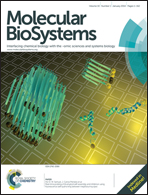Exploring mechanisms of human disease through structurally resolved protein interactome networks
Abstract
The study of the molecular basis of human disease has gained increasing attention over the past decade. With significant improvements in sequencing efficiency and throughput, a wealth of genotypic data has become available. However the translation of this information into concrete advances in diagnostic and clinical setups has proved far more challenging. Two major reasons for this are the lack of functional annotation for genomic variants and the complex nature of genotype-to-phenotype relationships. One fundamental approach to bypass these issues is to examine the effects of genetic variation at the level of proteins as they are directly involved in carrying out biological functions. Within the cell, proteins function by interacting with other proteins as a part of an underlying interactome network. This network can be determined using interactome mapping – a combination of high-throughput experimental toolkits and curation from small-scale studies. Integrating structural information from co-crystals with the network allows generation of a structurally resolved network. Within the context of this network, the structural principles of disease mutations can be examined and used to generate reliable mechanistic hypotheses regarding disease pathogenesis.


 Please wait while we load your content...
Please wait while we load your content...